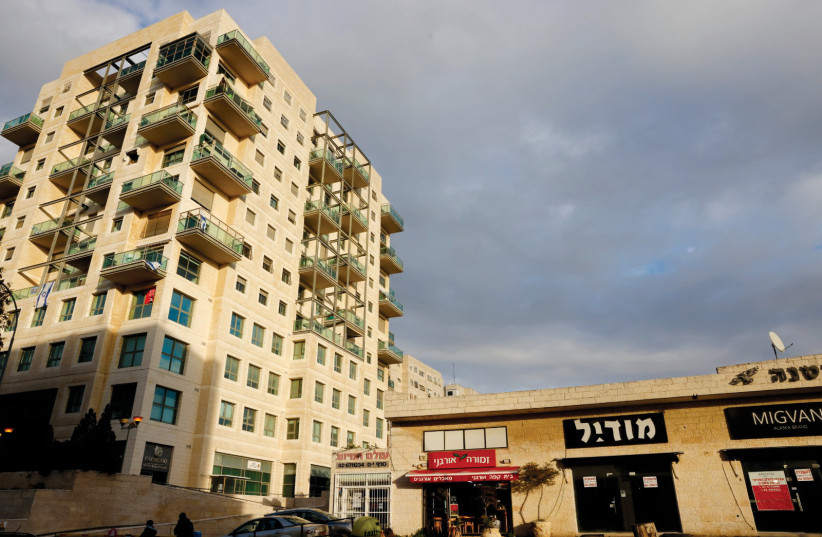
The Talpiot neighborhood is a testament to tradition and innovation coexisting in the heart of our ancient capital.
Nestled between Baka and Katamon, Talpiot has evolved over the years into a vibrant community that reflects the dynamic spirit of Jerusalem, with its mix of residential and commercial buildings. What distinguishes Talpiot is its ability to embrace its historical roots while simultaneously modernizing.
A brief history
In the 1920s, Talpiot began as a large, sprawling suburb of Jerusalem. Over the decades, it has gradually been split into different neighborhoods, such as East Talpiot and Arnona. After the War of Independence, Talpiot was a frontier suburb surrounded by Jordanian-ruled east Jerusalem.
Tragedy struck on May 24, 2001, when a large portion of the third floor of the Versailles wedding hall collapsed, killing 23 people and injuring 256 after they fell two stories.
The name Talpiot derives from a verse in Song of Songs 4:4: “Thy neck is like the tower of David, built with turrets.” According to rabbinic sources, Talpiot refers to the Temple. It was said to be a compound of the Hebrew words tel (hill) and piyot (mouths), as in: “the hill to which all mouths turn in prayer.”

From baby stores to BMWs
If you need your car fixed or want to splurge on a new couch, Talpiot is the place to go. The Industrial Zone teems with car showrooms, mechanics, and furniture and lighting stores. The neighborhood is also home to the Hadar Mall and Achim Yisrael Mall shopping hubs.
The latest addition to General Pierre Koenig Street is a new building complex for the outwear and sportswear store Decathlon, the new premises for Talpiot veteran baby store Shilav, as well as new showrooms for Mercedes-Benz and Honda.
Talpiot also has the largest concentration of supermarkets in the country, with three Rami Levis, an Osher Ad, two Shufersals, and the latest arrival – Yochananof.
Talpiot is also a hub of Jerusalem nightlife, with a multiplex cinema, bowling alley, pool hall, and dozens of bars and clubs focused around Ha’uman Street. The Yellow Submarine, established in 1991, is a popular performance space for musicians, with rehearsal rooms, a recording studio, and a nightclub.
The Sam Spiegel Film and Television School is based in Talpiot. Originally called the Jerusalem School of Film, it was renamed after the legendary Jewish Hollywood producer.
Culinary delights
For culinary delights, many of Talpiot’s restaurants regularly feature in a list of top Jerusalem eateries. Papagaio, the Brazilian-style meat restaurant with its never-ending supply of meats, is a firm favorite of tourists and natives alike and has developed a reputation over the years as one of the best “meat-houses” in the country.
Likewise, the Tzidkiyahu and Ezra restaurants, both on Yad Harutzim Street, offer patrons a non-stop feast of Israeli meat skewers, and an endless supply of salads, dips, fries, and vegetables.
Talpiot’s future
The Jerusalem Development Authority is spearheading a comprehensive urban renewal initiative, in collaboration with the Jerusalem Municipality and the Jerusalem and Heritage Ministry, to revolutionize the neighborhood by 2040.
The revised plan seeks to transform Talpiot into a pivotal urban center that will include three new light rail lines. Emphasizing high-quality public spaces, pedestrian-friendly routes, and accessibility to public transportation, the vision for the renewed Talpiot is to transform the quarter into a melting pot of residential units, commercial establishments, employment centers, educational institutions, cultural and entertainment venues, crafts, and services.
Final note: Approximately half of the revitalized area, spanning some 8,500 units, is earmarked for residential purposes. ■
